A verdadeira salsicha é uma mistura emulsificada de carne, gordura e temperos. A diferença básica entre uma linguiça e uma salsicha reside nas proporções destes ingredientes e nas tecnicas de emulsificação, que transformam a mistura em uma massa homogênea e cremosa, muitas vezes aerada devido ao tipo de processo adotado.
O importante é que a mistura fique bastante cremosa, delicada e saborosa. Ao contrário dos produtos oferecidos pelas grandes indústrias, não é necessário adicionar grandes quantidades de proteínas e emulsificadores vegetais, como proteína e lecitina de soja. Infelizmente esses produtos industriais econômicos deram à salsicha esse rótulo de produto de baixo custo e qualidade, e, infelizmente, com toda a razão, pois a salsicha comum encontrada nos supermercados é horrível, borrachuda e com sabor artificial. Mas, a verdadeira salsicha é rica em sabor, qualidade e possui uma textura cremosa! Basta fazer em casa, escolher um bom fornecedor e olhar os ingredientes ao invés do preço na hora de comprar.
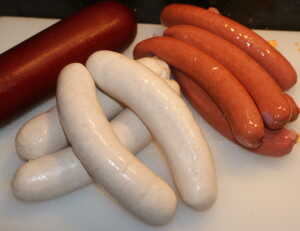
Equipamentos utilizados para fazer salsicha
- Moedor de carne;
- Batedeira com batedor de pá plana;
- Ensacadeira(enchedor de linguiça elétrico ou manual);
- Faca bem afiada.
Ingredientes para fazer salsicha
- 500 gramas de carne magra – geralmente de boi e/ou porco;
- 250 gramas de gelo picado – pode ser água, vinho ou algum caldo;
- 375 gramas de gordura de porco – preferencialmente da camada da pele ou banha;
- 20 gramas de sal – se usar caldo salgado, reduza o sal;
- 25 gramas de leite em pó desnatado – funciona como emulsificante, estabilizante e umectante.
Procedimentos
Fazer uma salsicha é um processo um pouco mais complicado do que fazer uma linguiça, o procedimento não é difícil, mas é preciso acertar nas proporções dos ingredientes e, assim como na produção de linguiças, estar atento às temperaturas durante todo o processo.
Mantenha sempre tudo gelado, e isso é válido para as travessas, equipamentos, carnes, gordura e líquidos adicionados à receita. Deixe-os no freezer antes de utilizá-los. É recomendado deixar a carne e a gordura no freezer e utilizá-los quando estiverem quase congelados. O sal é adicionado na proporção de 10 gramas para cada 500 gramas de carne e gordura, lembre-se que com o sal é sempre melhor errar para menos e depois acertar no final, pois o inverso é muito mais complicado e trabalhoso para corrigir.
Moer e misturar
Pique a carne com uma faca, aproveite para tirar os nervos. Passe a carne e a gordura no moedor de carne com o disco largo, volte para o freezer caso tenha aquecido um pouco, tempere com o sal e, caso ache necessário, adicione o nitrito de sódio para prevenir a proliferação de bactérias. Volte para o freezer caso a mistura tenha esquentado um pouco. Remova do freezer, adicione o líquido bem gelado ou congelado e picado e passe novamente no moedor de carne com o disco de moagem mais fino. Retorne a mistura para o freezer.
Emulsificando o recheio da salsicha
Essa é a parte mais importante que transforma uma linguiça em salsicha. Retire a mistura do freezer e adicione no batedor com a pá plana, mantendo sempre tudo bem gelado. Adicione os temperos e bata em temperatura alta por 4 minutos. A mistura deve estar bem pastosa e uniforme.
Acrescente o leite em pó para ajudar a emulsificar, estabilizar e reter umidade. Bata por mais 2 minutos. Desligue e guarde refrigerado para encher esse recheio na tripa e finalmente transformar em salsichas.
Teste do recheio da salsicha
Para testar se o recheio está com o gosto desejado, pegue uma porção, enrole em um filme plástico e deixe ferver em uma panela, retire e experimente. O ideal é que o interior da salsicha esteja a 65 graus para retirar da fervura e experimentar. Acerte os temperos e o sal caso note algum problema. Caso o recheio tenha ficado farinhento, despedaçando, ou com gordura grudando no plástico, será um péssimo sinal, pois provavelmente algo desandou na emulsificação, possivelmente a temperatura subiu muito durante o processo.
Enchendo a salsicha
Encha a salsicha da mesma forma que se enche uma linguiça(mais detalhes, leia Como fazer linguiça?), utilize um enchedor de manivela, elétrico ou um funil largo. No caso da salsicha, por ter uma consistência pastosa, também é possível usar um saco com bico de confeiteiro para colocar o recheio na tripa. Mas em todos os casos é necessário deixar a tripa de molho por, pelo menos, trinta minutos, depois enrolar toda a tripa no tubo do enchedor, empurrar o recheio na tripa e por fim girar ou amarrar de, aproximadamente, 10 em 10 centímetros.
A forma correta de comer a salsicha
A forma correta é mantendo a água para o cozimento da salsicha numa temperatura entre 80ºC e 90ºC, ou seja, sem deixar a água ferver. Caso tenha um termômetro culinário, monitore a temperatura interior de uma das salsichas, quando ela estiver em, pelo menos, 65ºC(por volta de 15 e 20 minutos), retire-as do fogo e coloque num outro recipiente com água bem gelada por cerca de 5 minutos para interromper o cozimento. A temperatura deve baixar para 60 graus. Após este cozimento, a salsicha pode ser consumida ou refrigerada para posterior reaquecimento por fervura, na frigideira, churrasqueira ou forno. Passar sempre numa frigideira é uma boa opção pois a caramelização proveniente deste processo acrescenta sabor à salsicha. Caso queira um sabor mais defumado, asse-as na churrasqueira deixando tostar levemente a parte externa.
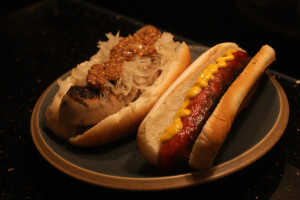
A salsicha pode ser defumada?
Sim, pode defumar ao invés de cozinhar em água, neste caso regule o defumador para uma temperatura entre 80ºC e 90ºC, mantenha no defumador até que a temperatura interna das salsichas chegue em 72ºC. Retire e mergulhe em água gelada. Pode consumir de imediato, refrigerar ou congelar.
Não tenho termômetro, como posso saber se as salsichas estão cozidas?
Sem termômetro deixe cerca de 25 minutos na água a 80ºC. Mantenha a água sem ferver, geralmente quando começar a surgir as bolhas no fundo da panela é o momento para manter o fogo bem baixo, sem deixar ferver. Esse tempo varia conforme a espessura das salsichas, qunato mais grossas, mais tempo para o interior chegar na temperatura correta, entre 65ºC e 72ºC. Chegando nesta temperatura no interior das salsichas, estarão cozidas e esterilizadas, podendo consumir de imediato, refrigerar ou congelar.
Devo usar sal de cura(nitrito) e em quanto tempo o sal de cura começa a agir e proteger a salsicha?
O nitrito do sal de cura começa a agir e proteger as salsichas no momento em que é colocado na carne. O uso é recomendado em especial para as salsichas defumadas, pois o ambiente do defumador é propício para o desenvolvimento da bacteria responsável pelo botulismo. Para entender melhor o funcionamento e tempo de ação do sal de cura, leia o post Tempo de conversão do nitrito nas carnes curadas.
-
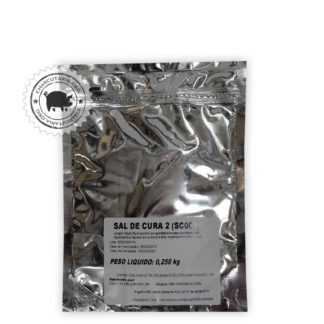 Sal de cura 2R$ 8,00
Sal de cura 2R$ 8,00 -
 Sal de cura 1R$ 8,00
Sal de cura 1R$ 8,00 -
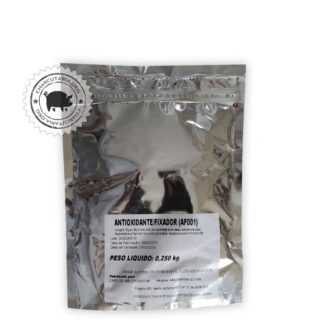 Antioxidante FixadorR$ 23,00
Antioxidante FixadorR$ 23,00 -
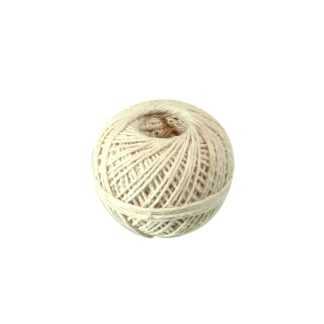 Barbante culinárioR$ 7,90
Barbante culinárioR$ 7,90 -
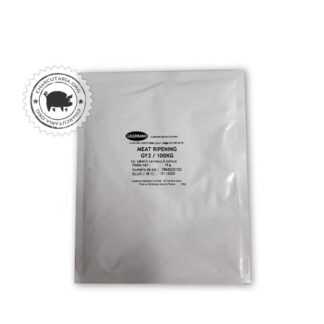 Cultura StarterO preço original era: R$ 69,90.R$ 59,90O preço atual é: R$ 59,90.
Cultura StarterO preço original era: R$ 69,90.R$ 59,90O preço atual é: R$ 59,90. -
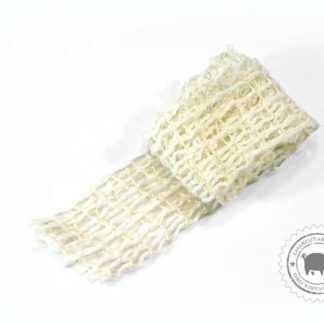 Rede elástica culinária 50mmR$ 15,00
Rede elástica culinária 50mmR$ 15,00 -
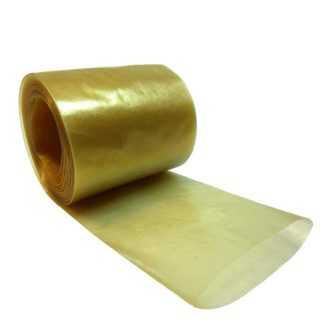 Tripa de colágeno 45mm rolo 5 metros salameR$ 25,00
Tripa de colágeno 45mm rolo 5 metros salameR$ 25,00 -
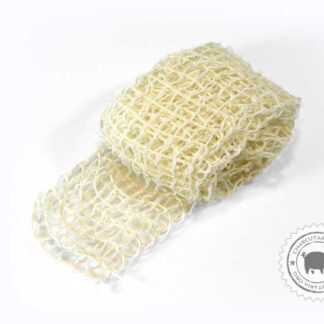 Rede elástica culinária 65mmR$ 18,00
Rede elástica culinária 65mmR$ 18,00 -
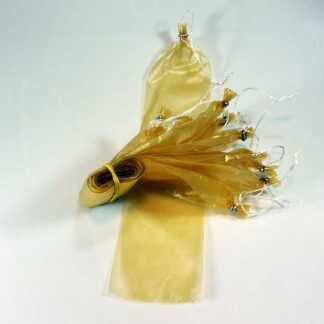 Tripa de colágeno salame 45mm 10 unidades amarradasR$ 22,00
Tripa de colágeno salame 45mm 10 unidades amarradasR$ 22,00 -
 Tripa de colágeno 80mm copa e salameR$ 29,90
Tripa de colágeno 80mm copa e salameR$ 29,90 -
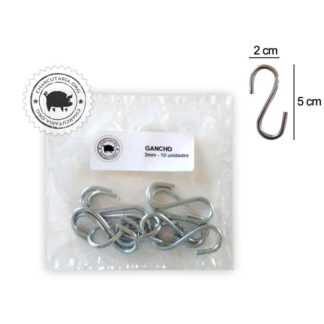 Gancho GalvanizadoR$ 12,00
Gancho GalvanizadoR$ 12,00 -
 Tripa de colágeno salame 50mm 10 unidades amarradasR$ 24,00
Tripa de colágeno salame 50mm 10 unidades amarradasR$ 24,00



Minha esposa não pode com leite em pó, o que poderia usar para emulsificar? Obrigado
Pode fazer sem ou usar um emulsificante, como este. Pode fazer sem também, é opcional para dar mais consistência, mas consegue fazer sem.
Olá! Seu conteúdo é de muita qualidade, obrigada por compartilhar! Estou começando a produzir salsichas e quero adquirir uma ensacadeira, qual você indica? E sobre materiais ou cursos para aprender, pode dar dicas também? Desde já obrigada!
Oi Edlane. Sobre a ensacadeira pode comprar as nacionais das marcas CAF, Piceli e Metvisa. Tem outras boas também. Caso queira uma pequena bem barata em alumínio pode comprar a chinesa da marca Master Feng, pesquise por “aliexpress master feng” que vai encontrar direto da China por um preço bom.
Sobre materiais pode baixar os manuais que disponibilizamos gratuitamente: https://charcutaria.org/categoria-produto/manuais/
Não us sal de cura a salcicha
É possível fazer salsicha d camarão, peixe entre outros?
Oi Eduardo Marcelo, sim, pode fazer salsicha com peixes e frutos do mar, o princípio é o mesmo. Só que geralmente são carnes que soltam muito mais água então terá que fazer uso de mais amidos ou proteínas vegetais para obter uma estabilidade adequada. No momento não tenho nenhuma receita para te passar.
Boa Tarde! Você tem receita de salsicha viena?
Willian, a salsicha viena geralmente é feita com 40% carne bovina, 40% carne suína e 20% gordura do toucinho suíno. O bovino pode ser vitelo ou outro corte magro e o suíno o pernil é o mais indicado.
Sobre esse peso acrescente 2% de sal, 20% de gelo, 0,24% de sal de cura, 0,25% de antioxidante e os condimentos que desejar. Essa é a base.
Eita, vi agora esta receita! Que maravilha! No caso aí adiciona temperos a gosto da pessoa ou não há necessidade e basta o sal ou o caldo que sugere? Após o cozimento da salsicha se retira a “tripa” ou com a tripa de carneiro fica praticamente imperceptivel ao comer?
Oi Matheus, pode comer com a tripa de carneiro, ela é bem macia. A tripa é removida quanto é de colágeno(opcional pois é comestível) ou a de celulose, que não é comestível. O tempero base é o da receita, pode acrescentar mais conforme o gosto.
Boa tarde Eduardo,
qual a quantidade do corante liquido de urucum por litro? Parabéns pelo site e as explicações.Agradeço pela atenção.
Oi Rosangela, depende do fabricante pois a concentração pode variar, mas geralmente a diluição fica em torno de 1 para 40. 1 litro do urucum para 40 litros de água.
Eduardo Schulze você conhece um fornecedor de salsichas Frankfurt? que envie para o estado do RS ou que envie para cidades, preciso muito dessas salsichas, por favor entre em contato comigo se possível!
Salscihas boas são difíceis de encontrar ultimamente. Tente no eurofrig que são boas.
Você poderia indicar que processador usar caso a pessoa queira comercializar e caso queira apenas produzir para consumo? Um vídeo, mostrando todo esse processo do texto seria bem legal
Para uso profissional o ideal é um equipamento chamado Cutter para frigoríficos. Para uso caseiro precisa de um processador com lâminas bem afiadas e motor potente, perto de 1000W e com uma cuba grande. A maior preocupação é reduzir a geração de calor, por isso a potência e capacidade são importantes, equipamentos pequenos com motor fraco trabalham no limite e esquentam muito a massa. Essa receita de salsicha de frango caseira tem um vídeo no final.
ola eu comi uma salsicha num bar em louveira – acho que deve ter sido da berna. nunca tinha provado uma salsicha como aquela. só conhecia a industrial. me apaixonei. eu tenho um açougue e já faço linguiças.
e agora quero mudar o conceito e tentar fazer umas coisas diferentes. estou estudando e fazendo uns cursos. mas geralmente só encontro material sobre linguiças. de salsicha, bem pouco.
vc tem alguma dica para uma salsicha tipo alemã, uyma vermelhinha que tinha sabor defumado? eu não sei o nome dela.
Joao, acredito que tenha comido a Bock, Pinguim ou, como era vermelinha, muito possível ter sido a frankfurter. O sabor de defumado pode ter sido por defumação por queima direta ou imersão em fumaça líquida, depende da receita. Tenho muitas receitas em livros, no site tenho só uma Bratwurst 100% pernil. No geral vai 35% de pernil suíno, 35% de peito bovino e 30% de barriga suína. A porcentagem e corte das carnes pode variar, só a gordura que é bom manter sempre perto dos 30%. Também pode ter pele suína, pele de frango, amidos, proteína de soja e colágeno em pó. O importante da salsicha é a emulsão, tem que ser muito bem feita ou desanda tudo.
Sem os sais de cura qual é a durabilidade desse produto na geladeira e congelado?
Sem conservantes adicionais a durabilidade será a mesma de uma carne bem temperada e refrigerada, ou seja, por volta de 5 dias. Alguns condimentos são bactericídas e fungicidas como o alho e a cebola. Acidificação também vai aumentar a durabilidade. Congelado pelo menos 3 meses, mas bem capaz que estrague a textura ao descongelar.
Olá não vi na receita o procedimento para deixar a salsicha com a cor vermelhinha
A cor avermelhada externa é obtida na hora da cocção, com água e corante urucum líquido. Também é possível agregar cor à massa usando o corante carmim.
Ola. Estou comecando a fazer salsichas em casa e depois de ler o seu artigo fiquei na duvida se é melhor usar o moedor de carne + batedeira, ou processador. Outra coisa, a minha salsicha nao ficou com boa textura, nao segui esta receita aqui sua, mas respeitei as proporcoes de carne e gordura… Nao ficou cremosa por causa do gelo? Nao coloquei gelo… Ou foi por qie nao bati na batedeira? Obrigada
Oi Betsi, é possível fazer na batedeira ou no processador, as duas formas funcionam mas os resultados são diferentes. Na batedeira precisa moer no disco fino duas vezes e o resultado é um pouco granulado. No processador o resultado é mais liso, fino, homogêneo. Se está começando e não tem equipamentos profissionais, recomendo que teste essa salsicha de frango caseira, pois a carne de frango é mais macia para o processador trabalhar e emulsiona mais fácil, principalmente com a pele junto.
Muito Obrigada! Vou tentar fazer a de frango.
Ótimo blog! Estou começando no mundo da charcutaria. Serei um leitor e perguntador contumaz. Primeira pergunta: para salsichas a tripa de carneiro é a mais indicada?
Oi Cristiano, pode perguntar à vontade o quanto quiser que tento responder com o pouco que sei desta vasta arte! A tripa de carneiro é a mais recomendada por ser mais fina e macia, facilitando a mastigação e ficando com o formato típico de salsicha de cachorro quente. Só que exatamente por ser fina e delicada ela é mais difícil de trabalhar, pois estoura facilmente. Em uma outra receita que fiz da salsicha alemã Bratwurst, usei a tripa suína de calibre médio. As salsichas Bock e Pinguim, que também são bem conhecidas no Brasil, tem calibre elevado. Além da tripa natural também pode fazer com a tripa de colágeno, que é mais rígida e tem mastigação mais difícil, mas é muito fácil de trabalhar com ela. Então, não há regra, tem que pesar as vantagens e desvantagens no produto que pretende fazer!
Queria saber se poderia usar pernil para poder fazer? Estava pensando em diminuir um pouco a quantidade toucinho, ja que pernil nao e uma carne magra.
Oi Yuri, postei uma receita de salsicha usando apenas o pernil suino, que era bem gordo, veja em Receita de salsicha alemã Bratwurst caseira natural. Pra mim a quantidade de gordura dessa receita foi ótima, não precisei acrescentar mais.
como pode que isso estou de BOCA aberta de saber que a salsicha e feita assim
A verdadeira salsicha é uma mistura emulsificada de carne, gordura e temperos. A diferença básica entre uma linguiça e uma salsicha reside nas proporções destes ingredientes e nas tecnicas de emulsificação, que transformam a mistura em uma massa homogênea e cremosa, muitas vezes aerada devido ao tipo de processo adotado. O importante é que a mistura fique bastante cremosa, delicada e saborosa. Ao contrário dos produtos oferecidos pelas grandes indústrias, não é necessário adicionar grandes quantidades de proteínas e emulsificadores vegetais, como proteína e lecitina de soja. Infelizmente esses produtos industriais econômicos deram à salsicha esse rótulo de produto de baixo custo e qualidade, e, infelizmente, com toda a razão, pois a salsicha comum encontrada nos supermercados é horrível, borrachuda e com sabor artificial. Mas, a verdadeira salsicha é rica em sabor, qualidade e possui uma textura cremosa! Basta fazer em casa, escolher um bom fornecedor e olhar os ingredientes ao invés do preço na hora de comprar.
amelização proveniente deste processo acrescenta sabor à salsicha. Caso queira um sabor mais
Gostaria de agradecer (MUITO) o compartilhamento das receitas. Há males que vem para o bem. No meu caso, cheguei aqui por causa da operação Carne Fraca (Lava Jato). Comemos (pouco) salsicha, mas mesmo assim podendo evitar produtos industrializados o faço. Depois dessa, tenho um forte motivo para fazer em casa. Se for possível, gostaria de receber receitas que possam ser preparadas artesanalmente. Vou comprar um moedor de carne com o funil (para encher linguiças e salsichas). Tenho uma boa batedeira, facas e mais alguns acessórios que serão úteis. Além de muitos temperos. Acredito que possam acessar meu email, então desde já agradeço novamente.
Essa operação que interditou frigoríficos grandes desperta ainda mais a necessidade de saber o que consumimos. Linguiça, por exemplo, é tão fácil de fazer que não há motivos para comprar pronta. Salsicha já é mais difícil, mas mesmo assim com o tempo vai pegando o jeito. Se tiver um bom processador de alimentos, com uma lâmina bem afiada, é até melhor que a batedeira.
Tanto a linguiça quanto a salsicha são para serem consumidas logo após o preparo ou posso congelar por algum tempo? Obrigada!
Priscila, pode congelar sim, mas lembre-se que o congelamento lento gera cristais de gelo grandes que rompem e danificam a estrutura da carne, então o produto nunca ficará com a mesma qualidade. Para comercialização o ideal é o sistema IQF(individually quick frozen). Dura entre 3 e 6 meses congelado.
Tem como substituir a gordura suína pois tenho alergia à carne de porco e seus derivados..
Evandro, pode testar usar um mix de cortes bovinos magros e marmorizados que fique perto de 20% a 30% de gordura, assim não terá nada suíno na composição. Dê uma olhada nesta discussão sobre gordura bovina ou suína nos embutidos.
Olá, o que seriam cortes marmorizados? O cupim é um exemplo?
Oi Jackson, cortes marmorizados são aqueles que possuem muita gordura intramuscular. O cupim é bem marmorizado.
Olá, qual equipamento e tamanho certo para encher a tripa para salsicha?
uito explicativo, gostei da receita califórnia, posso aplicar na salsicha tipo Viena. fica bom Grato.
Olá! Obrigada pela receita! Já fez alguma variando os temperos? Como pimentas e ervas desidratadas? Se fez, pode dar algumas sugestões? Obrigada!!
Cerveja escura, açúcar mascavo, alho desidratado, pimenta do reino e cravo.
Obrigada!!!! 😉
Olá. Estou interessado em aprender a fazer salsichas e gostaria de uma indicação para essa batedeira. Qual o equipamento mais adequado, você poderia me indicar uma marca ou referência? Obrigado.
O post fala da batedeira orbital, mas não é o equipamento ideal. Em pequena escala o multiprocessador pro line da kitchenaid é bom. Se for fazer em escala um pouco maior recomendo um moinho coloidal ou um cutter específico para emulsificar carne. O importante é ser potente e ter uma boa lâmina de corte, pois precisa ser rápido para não esquentar demais e quebrar a emulsão. A fabricante Skymsen faz bons produtos e tem um cutter pequeno, pode ser uma boa opção.
Essas salsichas de supermercado também tem muita carne mecanicamente separada(CMS), que é “carne separada” da carcaça triturada! Nem cachorro consegue separar tanta “carne” do osso. No fim esse monte de osso triturado dá aquela textura granulada horrorosa nessas salsichas de baixo custo. Colocam 60% de CMS, um monte de pele, papada, emulsificante, estabilizante para incorporar litros de água, corante, conservante… só coisa de primeira!
Depois misturar > embutir > cozinha > resfriar eu posso deixar as salsichas penduradas num balcão de açougue refrigerado por até 2 dias ? O sabor dela fresca será melhor do que dela exposta por 2 dias ?
Grato !
A emulsão de uma salsicha tem muita água, um balcão refrigerado pode remover muita água em 2 dias, o ideal é que sejam seladas à vácuo. No mínimo cubra com filme pvc para evitar ressecamento.
Na descrição dos ingredientes necessário na consta o nitrito e nem a quantidade a usar!
A salsicha geralmente é cozida no final do processo, portanto não há tanta necessidade do uso do nitrito como inibidor de patógenos. Caso vá defumar, maturar ou queira o benefício da coloração e sabor da cura, use 2,4g de sal de cura para cada 1kg de carne.
Gostei bastante da recita e do processo.
Vou tentar fazer
Se alguém tiver informações sobre tripas naturais e sintéticas e características mais comuns sobre elas?
http://charcutaria.org/embutidos/tipos-de-tripas-naturais-e-artificiais/
gostaria de receber uma receita de presunto
Eu não recomendo tentar presunto sem ter a forma de prensagem do presunto, mas vamos lá, vou dizer mais ou menos o processo de presunto 100% carne que fiz, prá vc ver se é mesmo essa a parada que vc quer enfrentar, ok? Primeiro, o presunto que vou falar é presunto cozido, existem diversos outros tipos crus e defumados. Não vou citar quantidades, pois a rceita tá em casa e tô longe de casa agora. Eu começo achando um açougueiro dos bons, não costumar servir açougueiro de supermercado que só tira bife de peça embalada à vácuo. Tem que ser aquele que desmancha o porco e que saiba retirar o coxão mole suíno do pernil, pois o coxão mole tem a curva característica do presunto e isso ajuda pacas. Depssi é necessário fazer uma solução de salmoura temperada. O tempero do presunto se chama condimento califórnia. Existem inúmeros fabricantes do tempero e aí vc deve seguir a proporção indicada pelo fabricante do condimento, é aí que a coisa complica, cada fabricante do tempero usa um “sistema” de produção do presunto com emulsificantes, superrendimento, nitratos e nitritos próprio, então é difícil fazer sem comprar o “pacote completo” para ter os conservantes… Leia mais »
Existe algum tipo de salsicha especifica, que use carnes de boi ou de porco, ou alguma que misture as duas?
A salsicha tipo Viena, que é a de alta qualidade encontrada no supermercado é mistura de carne bovida (dianteiro pois dá mais “liga”) carne magra suína e toucinho de porco. Se a carne é boa nem precisa de emulsificante. Já fiz salsicha branca no multiprocessador usando somente sal (2%), gelo (10%), filé mignon suino (60%) e toucinho (30%). Ficou melhor e mais barata do que qualquer salsicha comercial
A salsicha tipo “hot dog” que comumente compramos de baciada no supermercado abusa da pele de frango (que tem classificação legal como proteína de aves) substituindo grandes parte da carne de boi , carne de porco e toucinho, e dá-le emulsificante prá pegar liga.
Para coloração vermelho intenso, será necessário preparar uma solução corante. o verelho intyenso é feito da bunda da formiga cochonilha, vermelhos menos intensos são feitos com outros, como colorau vermelho, urucum, etc. onde vc mergulha a salsicha após o cozimento em água quente com a solução corante e depois resfria a salsicha em água fria salgada para fixar o corante.
Sobre as carnes dianteiras, tem alguma que você recomende? Estava pensando em patinho ou coxão mole.
Desculpe não entendi deve cozinhar a salsicha já na água com o corante ê isso ?
É isso, a cor avermelhada externa é obtida na hora da cocção, com água e corante urucum líquido. Também é possível agregar cor à massa usando o corante carmim.
Muito legal o site,
Tem alguma receita de salsicha mais especifica, nesse caso a salsicha ficará branca, como faço para salsicha ficar com coloração avermelhada, paprica ou colorau?
Cleber,
Se quiser algo mais natural pode substituir parte do gelo por suco de beterraba e cenoura. Ou acrescentar extrato de tomate, açafrão ou a própria páprica(que pode deixar o gosto específico). Nas alternativas industriais tem o carmim de cochonilha(feito de um inseto), caramelo IV, vermelho 40 ou outros corantes que pode encontrar facilmente em lojas de confeitaria, por exemplo.
Muito obrigado pelas dicas!!!!
muito muito bom o site super explicativo com técnicas excelentes.
grato